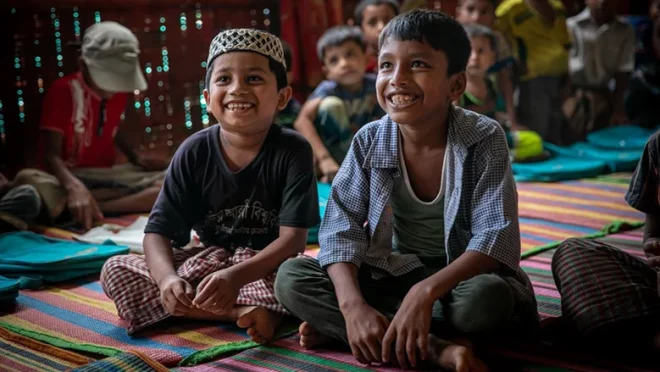How poverty is affecting child rights in Bangladesh
How poverty is affecting child rights in Bangladesh

Once hailed as the “role model” for economic growth, Bangladesh is now going through its toughest time, probably. Due to the economic crisis, the extreme poverty rate has risen from 5.6% to more than 9%.
Among this number, children are the most vulnerable sufferers, and according to UNICEF, almost three out of ten children now live below the poverty line. In recent times, children are facing the worst consequences of growing poverty, significantly more than those of adults.
As 35% of the population in Bangladesh are children, extreme poverty is hampering their basic human rights, like health, school attendance, food, and even housing. Children from rural areas are affected more by poverty than children living in cities. A recent report from the Multidimensional Poverty Index (MPI) states that children’s educational facilities have been greatly affected by the rising poverty.
The emerging number of child laborers indicates that the economy is worsening compared to the previous years. From 2013 to 2022, the rate of broader child labor was stable at 4.3% to 4.4% (UNICEF).
Despite significant progress over the past decade, Bangladesh is not on track to eliminate child labor from the country by the year 2025. Children living in poverty are leaving behind their hopes for a better future. They are working long hours in poor working conditions and mostly remain unprotected and unsafe in the workplace.
Poverty forces them to compromise education, limit their rights, and cause physical and mental harm by putting them at risk. These children lack access to any future opportunities. According to global data, Bangladesh has the largest number of child laborers in the agriculture sector, which is approximately 61%, followed by 27% involved in domestic work and selling goods in markets, and almost 13% in the industry, mining, and manufacturing sector.
Another major issue linked to poverty is the growing number of street children. A 2024 UNICEF survey revealed that the number of disadvantaged children in the country has increased to 3.5 million.
A great number of children among these live on the streets of Dhaka. The Bangladesh Bureau of Statistics (BBS) and UNICEF’s “Survey on Street Children 2022” found that 27% of children aged 5 to 17 had lost one or both parents, and almost 38% were forced to live on different streets due to poverty.
These street children struggle to acquire the essential resources needed for their survival. They also encounter various challenges, including abuse, previous trauma, neglect, and physical harm. Moreover, many of the children are becoming addicted, and a study found that around 40% of the surveyed children are using drugs. Furthermore, some children have dropped out of school because of poverty and are no longer receiving formal education. The number is estimated to be 30%, which is a pressing concern.
Child marriage, a deep-rooted issue, continues to thrive in Bangladesh. As of 2025, data from a global report by UNICEF, UN Women, and Plan International Bangladesh was published early this year, implying that 51.4% of girls in Bangladesh are married before their 18th birthday, the highest child marriage rate in Asia.
This grappling problem is driven by many factors: poverty, gender biases, the climate crisis, and entrenched social norms. Due to poverty, many families can not provide education for their daughters, and they view marrying off their adolescent daughters as the only way out of poverty and to secure their future.
A 2023 World Bank study found that poor families are 3.2 times more likely to marry their daughters off before the age of 18 than well-off families. Moreover, some catastrophic events, like natural disasters or Covid-19, exacerbated the poverty rate in the country. Apparently, these increasing economic hardships and social vulnerabilities pushed the girl children into a more uncertain future. They are mostly deprived of any protective environment and any form of fundamental rights.
Poverty in Bangladesh leads to widespread child food poverty. According to UNICEF, two in three children under the age of five are living in food poverty. Bangladesh is among the 20 countries that account for almost two-thirds of the total number of children experiencing hunger and severe food poverty globally.
One major factor contributing to this serious issue is families’ inability to afford food because of poverty and increasing food prices. Children who are denied proper nutrition during early childhood are more likely to struggle in school and remain trapped in the vicious cycle of poverty.
Addressing this cycle requires ongoing efforts. The plight of Bangladeshi children illustrates how poverty impacts their fundamental human rights. This is a powerful chain that connects not just one generation but also the next. Breaking it requires more than temporary assistance; it demands a commitment to education, social support, and a strong defense of every child’s rights.


